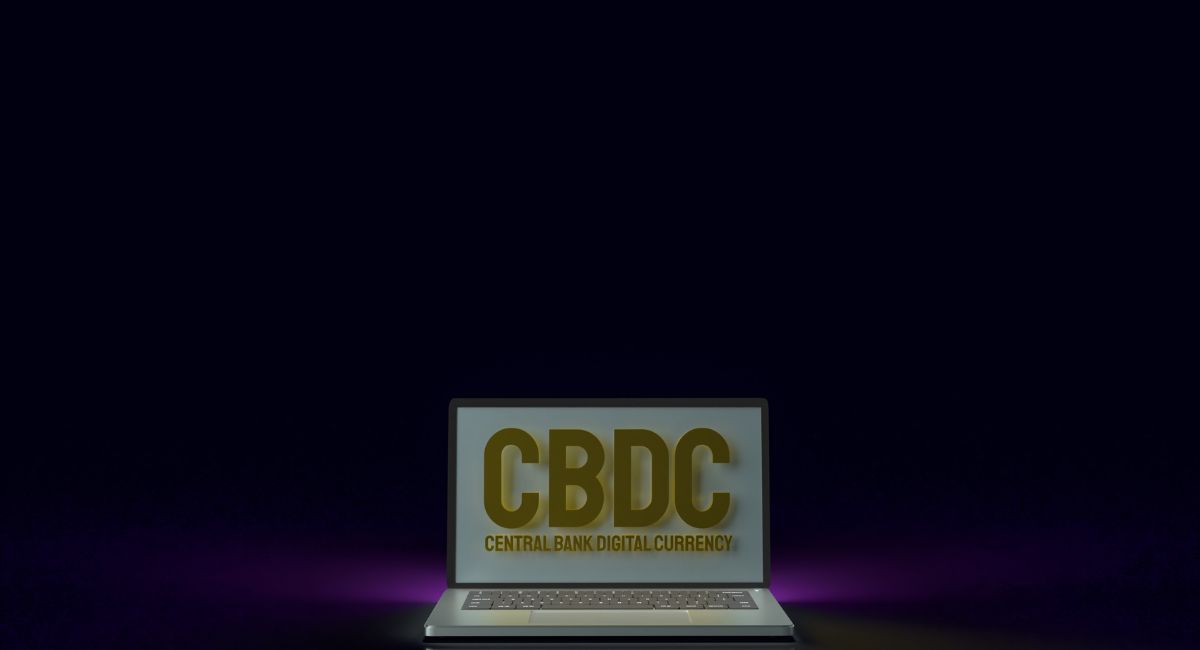Exploring CBDCs: How Central Banks Are Embracing Digital Currencies
Central Bank Digital Currencies, or CBDCs, are becoming a hot topic as more countries explore the idea of digital money issued by central banks. While traditional banks have been the main players in the financial system, CBDCs offer a new way to think about money and payments. They’re not just about going cashless; they could change how we pay for things and how economies work. But with these changes come questions about privacy, security, and how they fit into the global financial system. This article will look at how central banks around the world are approaching CBDCs, what challenges they face, and what this means for the future of money.
Key Takeaways
- CBDCs are being explored by 94% of central banks globally, with many countries in advanced stages of development.
- The motivations for CBDC adoption include financial stability concerns and the need for faster, safer monetary transactions.
- Design features such as interoperability and privacy are crucial in the development of CBDCs.
- Emerging markets see CBDCs as a tool for financial inclusion, despite facing significant implementation challenges.
- The role of stablecoins and existing cryptocurrencies influences the pace and direction of CBDC development.
The Global Surge in CBDC Exploration
Countries Leading the Charge
In recent years, the world has witnessed a remarkable increase in the exploration of Central Bank Digital Currencies (CBDCs). Over 105 countries, accounting for more than 95% of global GDP, are now actively investigating CBDCs. This is a significant jump from just 35 countries in 2020. Notably, ten countries have successfully launched a digital currency, with China, Jamaica, and Nigeria leading the way. China’s pilot is expanding rapidly, and Jamaica’s JAM-DEX is the latest addition to the list. This surge underscores a global shift towards digital currencies, driven by the need for financial stability and efficient monetary systems.
Motivations Behind CBDC Adoption
The motivation for adopting CBDCs varies across regions, but two primary drivers stand out: the rise of cryptocurrencies and the impact of the pandemic. Cryptocurrencies like Bitcoin have prompted concerns about financial stability, pushing central banks to explore more stable alternatives. Additionally, the pandemic highlighted the need for faster, more secure ways to distribute financial aid. CBDCs offer a promising solution, providing governments with a reliable mechanism to manage and distribute funds efficiently.
The Role of Advanced Economies
Advanced economies are playing a crucial role in the exploration of CBDCs. The European Central Bank is moving forward with the digital euro project, while the Bank of England is exploring a potential digital pound. These initiatives highlight the commitment of major economies to integrate digital currencies into their financial systems. Moreover, the Bank for International Settlements (BIS) has reported that a significant number of central banks in large economies are dedicating resources to retail CBDC exploration. This trend suggests that advanced economies are not only exploring but are also preparing to implement CBDCs as a staple of their monetary policy.
The rapid evolution of CBDCs is reshaping the global financial landscape, offering new opportunities for innovation and efficiency. As countries continue to explore and develop these digital currencies, the potential for transformative change in the way we conduct financial transactions is immense.
Designing CBDCs for the Future
Key Design Features
Central Bank Digital Currencies (CBDCs) are reshaping how we think about money and payments. Central banks worldwide are exploring various design features to ensure CBDCs meet future needs. Some core elements include:
- Two-Tiered Systems: These systems allow central banks to manage the foundational infrastructure, while private firms handle consumer-facing services. This structure helps maintain the role of commercial banks in the economy.
- Interest-Bearing Accounts: By offering interest on CBDCs, central banks could influence monetary policy directly, potentially steering economic activity and inflation.
- Programmability: This feature allows CBDCs to support smart contracts and other automated processes, increasing transactional efficiency.
Balancing Privacy and Transparency
Privacy is a major concern in the digital age, and CBDCs must find a balance between protecting user data and ensuring transparency. Some proposed solutions include:
- Anonymity for Small Transactions: To protect privacy, small transactions could remain anonymous, similar to cash.
- Digital Identification Systems: Utilizing digital IDs can help ensure secure transactions while maintaining some level of anonymity.
- Managed Anonymity: This concept, as seen in China’s e-CNY, allows for anonymous transactions up to a certain limit, beyond which identity verification is required.
Interoperability and Inclusivity
For CBDCs to be successful, they must be interoperable with existing financial systems and inclusive for all users. Key considerations include:
- Cross-Border Compatibility: Designing CBDCs with international use in mind can facilitate seamless cross-border transactions.
- Inclusivity Measures: Ensuring that CBDCs are accessible to people without traditional banking access is crucial. This might involve offline payment capabilities or partnerships with mobile operators.
- Collaborative Projects: Initiatives like the Digital Currency Initiative’s collaboration with the Federal Reserve Bank of Boston illustrate efforts to create interoperable and inclusive digital currencies.
CBDCs and Financial Stability
Impact on Traditional Banking
Central Bank Digital Currencies (CBDCs) could shake up traditional banking. Unlike cash, CBDCs might draw funds away from banks, which could lead to less money available for loans. This shift could force banks to rethink how they operate. They might need to offer more competitive interest rates or develop new services to retain customers. The introduction of CBDCs could redefine the relationship between central banks and private financial institutions.
Addressing Financial System Risks
CBDCs can help reduce risks in the financial system. Central banks may use tools like interest rate policies or caps on CBDC holdings to prevent large-scale withdrawals from traditional banks during economic stress. For instance, if people rush to convert their bank deposits into CBDCs, central banks could impose limits to keep the system stable. This approach might prevent “digital runs” that could destabilize the economy.
The Role of Stablecoins
In the world of digital currencies, stablecoins like USDT and USDC are gaining ground. They offer a stable value, often tied to traditional currencies, and are increasingly used in decentralized finance. However, their rise presents challenges for CBDCs, as central banks must ensure their digital currencies remain attractive and competitive. Stablecoins could also serve as a bridge, helping CBDCs integrate smoothly into the existing financial system.
As digital currencies evolve, the interplay between CBDCs and stablecoins will shape the future of money, requiring careful regulation and strategic planning.
CBDCs in Emerging Markets
Opportunities for Financial Inclusion
Central Bank Digital Currencies (CBDCs) present a unique opportunity to enhance financial inclusion in emerging markets. Many people in these regions lack access to traditional banking services. With a CBDC, individuals can engage in financial transactions without needing a bank account, reducing barriers to entry. This digital currency can be a game-changer for many, providing a secure, accessible means of participating in the economy. Moreover, CBDCs offer a platform for innovation, enabling the development of new financial services tailored to meet local needs.
Challenges in Implementation
Implementing CBDCs in emerging markets isn’t without its hurdles. A significant issue is the technological infrastructure required to support a digital currency system. Many regions may lack the necessary digital infrastructure, such as reliable internet access and digital literacy among the population. There’s also the risk of cybersecurity threats, which could undermine trust in the new system. Governments must address these challenges by investing in infrastructure and education to ensure the successful adoption of CBDCs.
Case Studies from Around the World
Several countries are already exploring CBDCs with varying degrees of success. For instance, the Bahamas’ Sand Dollar is one of the first fully operational CBDCs, designed to increase financial inclusion and resilience against natural disasters. In Nigeria, the eNaira aims to improve cross-border trade and financial inclusion. These initiatives highlight how different countries tailor CBDCs to their specific needs and challenges, offering valuable lessons for others considering similar paths.
CBDCs have the potential to transform financial systems in emerging markets by providing more inclusive and efficient means of conducting transactions. However, the success of these digital currencies will depend heavily on overcoming infrastructural and educational barriers.
The Technological Backbone of CBDCs
Digital Identification and Security
When it comes to CBDCs, security is a massive deal. Central banks need to ensure that their digital currencies are safe from cyber threats. Digital identification plays a key role in this process. It helps verify users and prevent unauthorized access. Imagine it like your digital passport for transactions. Security measures must be top-notch to protect sensitive info about users and their transactions. This involves using advanced tech like quantum-resistant cryptography and air-gapped data centers. It’s all about keeping the digital currency ecosystem secure from potential breaches.
Cross-Border Payment Solutions
Cross-border transactions have always been a bit of a headache. They’re slow, costly, and often involve multiple intermediaries. With CBDCs, there’s a chance to change this. Distributed Ledger Technology (DLT) can streamline these transactions, making them faster and more efficient. Projects like mBridge are already exploring how wCBDCs can support real-time cross-border payments. The goal is to cut down on costs and improve transaction speed, making international payments smoother for everyone.
The Role of Distributed Ledger Technology
DLT is like the backbone of many CBDC systems. It offers a way to record transactions that’s both secure and transparent. But here’s the thing—central banks are still figuring out whether to go with a centralized system or a permissioned DLT. Each has its pros and cons. A centralized system is easier to manage, but a permissioned DLT can offer more resilience and lower costs in the long run. It’s a balancing act between control and decentralization, and central banks are weighing their options carefully.
The integration of DLT in CBDCs could redefine how we view and handle money on a global scale, making transactions not just faster but more secure and transparent.
The tech behind CBDCs isn’t just about making transactions digital. It’s about creating a secure, efficient, and inclusive financial system that works for everyone.
Regulatory and Policy Considerations
Frameworks for CBDC Regulation
Central Bank Digital Currencies (CBDCs) bring new regulatory challenges. Crafting a legal framework is essential to address these challenges. Clear guidelines are needed to ensure that CBDCs operate within existing financial systems without causing disruption. Key areas of focus include anti-money laundering (AML) and combating the financing of terrorism (CFT) compliance. These frameworks must also consider how CBDCs interact with other financial instruments and technologies.
- Compliance: Ensuring CBDCs adhere to AML and CFT regulations.
- Integration: Aligning CBDC operations with existing financial systems.
- Flexibility: Adapting to new technologies and financial instruments.
International Cooperation and Standards
CBDCs cross borders, making international cooperation crucial. Countries need to agree on standards for cross-border transactions to avoid conflicts and ensure smooth operations. This cooperation involves harmonizing policies on data privacy, security, and exchange rates. Without such agreements, CBDCs could face significant operational hurdles.
- Data Privacy: Aligning international standards to protect user information.
- Security Protocols: Establishing common security measures.
- Exchange Rates: Coordinating currency conversion standards.
Addressing Privacy Concerns
Privacy is a major concern with digital currencies. Users demand assurance that their data is protected. Balancing transparency with privacy is tricky, but necessary. Innovative solutions like privacy-by-design can help. These solutions ensure that user data is only accessible under strict conditions, maintaining trust in the system.
Designing CBDCs involves a delicate balance. Policymakers must weigh the benefits of data accessibility against the need for privacy. This balance is crucial for maintaining public trust and ensuring widespread adoption.
In conclusion, regulatory and policy considerations for CBDCs are complex but vital. By establishing robust frameworks, fostering international cooperation, and addressing privacy concerns, central banks can ensure that CBDCs are both effective and secure. For more detailed legal considerations on CBDC issuance, refer to this legal paper.
Conclusion
Central Bank Digital Currencies (CBDCs) are reshaping the financial landscape, offering a glimpse into the future of money. As more countries dive into this digital frontier, the potential benefits and challenges become clearer. On one hand, CBDCs promise faster, more secure transactions and greater financial inclusion. On the other, they raise concerns about privacy and the role of traditional banks. It’s a balancing act for central banks worldwide, as they navigate these waters to ensure that digital currencies serve the public good without compromising stability. The journey is just beginning, and the next few years will be crucial in determining how CBDCs will fit into our everyday lives.
Frequently Asked Questions
What is a Central Bank Digital Currency (CBDC)?
A CBDC is a digital form of money issued by a country’s central bank. It’s like cash but in a digital format, allowing people to make payments electronically.
Why are countries interested in CBDCs?
Countries are exploring CBDCs to make payments faster and safer, improve financial access for everyone, and keep up with digital changes in money like cryptocurrencies.
How do CBDCs differ from cryptocurrencies?
CBDCs are issued and controlled by central banks, making them official and stable. Cryptocurrencies, like Bitcoin, are decentralized and not regulated by any government.
What are the potential benefits of CBDCs?
CBDCs can help make payments more efficient, support financial inclusion, and provide a secure way to handle money digitally. They also help central banks maintain control over the currency.
What challenges do CBDCs face?
CBDCs must balance privacy with security, ensure they work with existing financial systems, and address concerns about government control over personal spending data.
How are CBDCs being tested around the world?
Many countries are running pilot programs to test how CBDCs work in real life. These tests help them understand the best ways to design and use digital currencies.
Stay informed with daily updates from Blockchain Magazine on Google News. Click here to follow us and mark as favorite: [Blockchain Magazine on Google News].
Get Blockchain Insights In Inbox
Stay ahead of the curve with expert analysis and market updates.
latest from tech
Disclaimer: Any post shared by a third-party agency are sponsored and Blockchain Magazine has no views on any such posts. The views and opinions expressed in this post are those of the clients and do not necessarily reflect the official policy or position of Blockchain Magazine. The information provided in this post is for informational purposes only and should not be considered as financial, investment, or professional advice. Blockchain Magazine does not endorse or promote any specific products, services, or companies mentioned in this posts. Readers are encouraged to conduct their own research and consult with a qualified professional before making any financial decisions. The featured image used is just a creative depiction of the title and it does not intend to hurt sentiments of any person or institution. If it hurts anyone sentiments, please do not hesitate to reach out to Blockchain Magazine.

 Bitcoin
Bitcoin  Ethereum
Ethereum  XRP
XRP  Tether
Tether  Solana
Solana  USDC
USDC  Dogecoin
Dogecoin  Cardano
Cardano  Lido Staked Ether
Lido Staked Ether  TRON
TRON  Chainlink
Chainlink  Avalanche
Avalanche  Wrapped stETH
Wrapped stETH  Wrapped Bitcoin
Wrapped Bitcoin  Stellar
Stellar  Sui
Sui  Toncoin
Toncoin  Hedera
Hedera  Shiba Inu
Shiba Inu  WETH
WETH  Litecoin
Litecoin  Polkadot
Polkadot  LEO Token
LEO Token  Hyperliquid
Hyperliquid  Bitcoin Cash
Bitcoin Cash  Bitget Token
Bitget Token  Uniswap
Uniswap  USDS
USDS  Wrapped eETH
Wrapped eETH  Ethena USDe
Ethena USDe  Pepe
Pepe  NEAR Protocol
NEAR Protocol  MANTRA
MANTRA  Official Trump
Official Trump  Aave
Aave  Ondo
Ondo  Aptos
Aptos  Internet Computer
Internet Computer  Monero
Monero  Mantle
Mantle  WhiteBIT Coin
WhiteBIT Coin  Ethereum Classic
Ethereum Classic  Bittensor
Bittensor  Dai
Dai  Cronos
Cronos  POL (ex-MATIC)
POL (ex-MATIC)  OKB
OKB 




